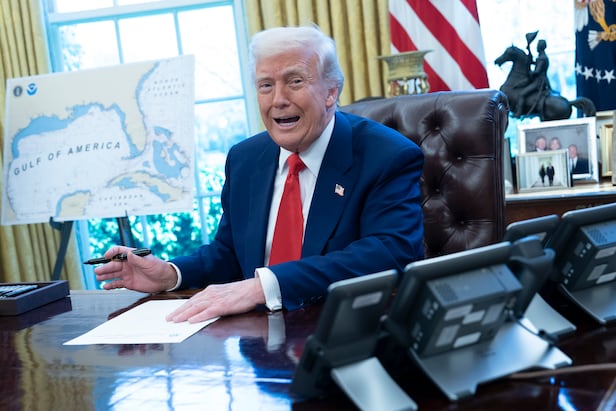
South Korea’s shipbuilding giants may find new opportunities in the U.S. as Washington moves to restore its maritime power.
U.S. President Donald Trump, on April 9, signed an executive order titled “Restoring America’s Maritime Dominance,” framing the revival of American shipbuilding as a national security priority. The order includes sweeping measures aimed at China’s maritime, logistics, and shipbuilding sectors, while also encouraging foreign investment and cooperation with allies, opening the door for South Korea, which Trump has recently named a key partner. Still, the policy presents both opportunities and strategic challenges for Korean shipbuilders as the U.S. seeks to reduce reliance on adversaries through allied collaboration.
Speaking at the Oval Office signing ceremony, Trump said, “We’re going to be spending a lot of money on shipbuilding,” adding, “We’re way, way, way behind. We used to build a ship a day, and now we practically don’t build one a year, even though we have the capacity to do it.”
The executive order was spearheaded by National Security Advisor Mike Waltz, a longtime advocate for revitalizing U.S. shipbuilding. As a member of Congress, he had previously introduced bipartisan legislation on shipyard and port infrastructure. A White House official noted, “It’s vital to restore maritime dominance by building more ships and expanding the commercial fleet that supports Navy operations.” Since Trump took office, the National Security Council (NSC) has established a dedicated shipbuilding division to drive this initiative.
The executive order instructs the U.S. Trade Representative (USTR) to take action in investigating China’s unfair targeting of the maritime, logistics, and shipbuilding sectors. It also directs the USTR to engage treaty allies, partners, and like-minded countries on any potential trade measures, raising the possibility that Washington could extend pressure even to friendly nations. The USTR has already indicated plans to impose fees on international shipping services involving Chinese vessels and Chinese-made ships.
The order further calls for reducing dependence on adversaries through cooperation with allies and partners, directing the Secretary of Commerce to propose incentives for shipbuilders based in allied nations to invest in the U.S. in order to strengthen the country’s shipbuilding capacity.
With Trump pushing to rebuild America’s shipbuilding industry, South Korea and Japan are seen as the only viable allies. South Korea, in particular, is recognized for its world-leading shipbuilding capabilities. Trump has previously mentioned shipbuilding cooperation during phone calls with former President Yoon Suk-yeol last year and again on April 8 with Acting President and Prime Minister Han Duck-soo.
Last year, Hanwha Group became the first Korean company to enter the U.S. shipbuilding market by acquiring Philly Shipyard. Since then, bipartisan interest in partnerships with Korean firms like HD Hyundai has grown. Collaboration with U.S. companies seeking to advance next-generation shipbuilding using AI and autonomous technologies is also picking up pace.


